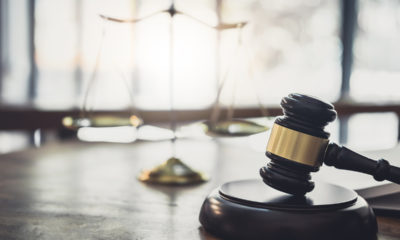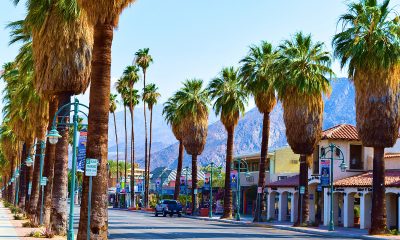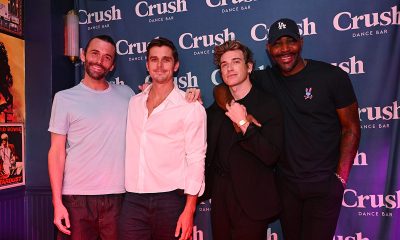Arts & Entertainment
Jasmine Guy’s world today
Actress in town this weekend with Harlem Renaissance tribute show
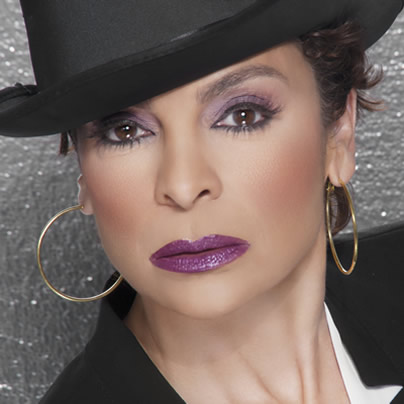
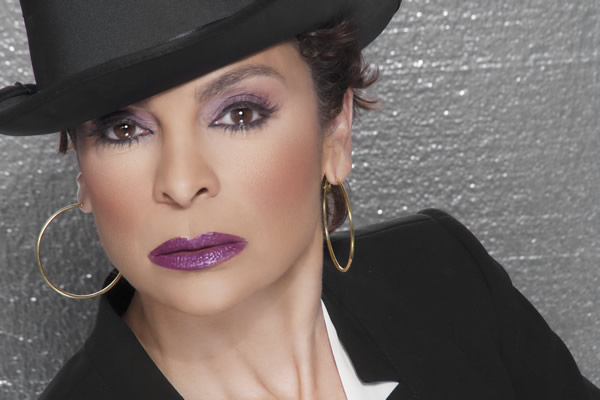
Actress Jasmine Guy says her passion for black culture in the early 20th century has kept her doing ‘Raisin’ Cane’ for five years. (Photo by Calvin Evans)
‘Raisin’ Cane: A Harlem Renaissance Odyssey’
Starring Jasmine Guy and the Avery Sharpe Trio
Saturday, 8 p.m.
Publick Playhouse
5445 Landover Rd.
Cheverly, MD
$55 VIP (includes pre-show reception)
$40 general
301-277-1710
Actress/singer Jasmine Guy will be in the D.C. area this weekend for a one-night-only performance of “Raisin’ Cane: a Harlem Renaissance Odyssey.”
We caught up with her by phone from her home in Atlanta where she answered questions about the show, gay rights, her work on the hit ’87-‘93 sitcom “A Different World” (she played spoiled Whitley for the show’s entire six-season run) and more. Her comments have been slightly edited for length.
WASHINGTON BLADE: Tell us about “Raisin’ Cane.”
JASMINE GUY: I’ve been doing the show over the past five years in various places all over the country. It grows and changes and morphs every time we do it. I do it with three other musicians — a jazz violinist, a percussionist and our composer, Avery Sharpe and we cover the decade between 1919 and 1929 of the Harlem Renaissance, right after World War I but just before the Great Depression when there was a lot of money flowing into Harlem and a lot of artists were flourishing. Painters, poets, writers, philosophers, so it was a pretty rich time in our American history. A lot of what has come down to us as Americans has come from that period as far as ways of thinking and ways of articulating our needs.
BLADE: Are you playing a specific character?
GUY: I’m like a teacher taking you through this journey. Along the way, whatever lesson needs to be taught, that’s what I do. I either reenact a scene or become another character or I dance or sing or tell a story or recite a poem — there’s a lot of all of that involved in the show.
BLADE: How did you come to the work?
GUY: Avery Sharpe and I have been friends for over 30 years and when he brought the piece to me, it started as a reading and an experimental piece to see where the interest was with people and over the last five years, it’s just continued to grow and grow. I stayed involved because of my passion for that decade and what was happening politically and historically in that time as well as artistically. It was such a fun and exciting time where jazz was birthed and we had poets like Langston Hughes and Zora Neale Hurston and painters like Aaron Douglas and philosophers like W.E.B. DuBois and Booker T. Washington and Marcus Garvey who were claiming freedom in their own way.
BLADE: African-American themes are recurring in your body of work. To what degree have you sought them out versus had them come to you?
GUY: Sometimes they intertwine. There are the roles that we pick and the roles we kind of cross paths with and we don’t really know why. There have been certain projects where I feel like I’m part of telling the truth, whether it’s “A Different World” or “Queen” (“The Story of an American Family”), or “Stompin’ at the Savoy” or “Dead Like Me,” there seems to be a certain truth to the quality of the work we’re doing at the time and I think that truth is what draws me in. I love that we tell stories that haven’t been told yet and that I’m able sometimes to get an audience to think as well as to laugh. I’m not sure which is more important, but I like that I can do both.
BLADE: Some have said gay activists who draw parallels to the Civil Rights movement are overreaching. Is that a valid line of reasoning in your opinion?
GUY: I have had friends over the years who have resented the comparison. … I think what we really all want is to be treated equally and have the right to make our own choices in our lives and in that respect, both gay rights and African-American rights have been stifled in this country and we’ve had to fight for those rights. We are still fighting in certain ways for those rights. … For some … the fight has shifted. I mean, we’re able to vote legally, we’re able to integrate, but there are still very specific things that are disproportionate in this country. There’s a huge class difference and whether you’re black or gay, there are still things we need to speak up for because in principle, it’s all the same principle. We are really all fighting for the same thing.
BLADE: With all your work in the entertainment industry, you must have worked with a lot of gays over the years. True?
GUY: Oh absolutely. I mean, you know, my world is full of gay people. I’ve been so entrenched in the gay community that it has never been a second thought to me. We are all family and because of that, I’m even more sensitive to what my gay friends go through. I’m 51, so I lived through AIDS and although I was very young when AIDS came to be, that’s when I first realized how segregated the gay community was for the rest of the world. Sometimes you forget that the world is not accepting and it takes something bad like the AIDS epidemic for you to realize. That’s when I started to realize my gay friends were heroes in their own right for having the courage to live the lives they know they want and the need and fight for the right to do that. And I don’t use that word fighting lightly, you know. I have friends who have fought all their lives, physically and emotionally. Some who have not had the support of their families. I don’t think people really understood what it means to be gay until very recently, in the last decade or so, whereas for me, it was just always a part of what I knew and understood.
BLADE: You’ve done so much work on stage, film and TV over many years and stage work, of course, by its nature is very ephemeral and fleeting. You can be on a hit show like “A Different World” that was seen by 20 million people each week, yet in some ways, it’s a small part of your overall body of work. Has that ever been a source of frustration for you?
GUY: That was frustrating for me at the beginning. I started as a dancer with the Alvin Ailey Company and yeah, I felt that, you know, my best work is probably the work that most people haven’t seen. I did have to come to terms with that because I mean, just the sheer degree of difficulty of being a dancer and being a gypsy as I was for eight years before I got “A Different World,” compared to the relative ease of being on a hit TV show, I used to think, “OK, I’ve got to make sure everybody knows that these other things are so much more worthy.” I felt it was my personal cause to let people know that, yes, I’ve worked with Judith Jamison and I know Debbie Allen and worked with Courtney Vance in “Six Degrees of Separation” and so and so. … I’ve really been surrounded by greatness and amazing talent and I’ve been in the wings of so many performances where I saw that happen before my eyes and that’s not something we’ve always been so great at being able to recreate on television. … But things are so different now and we have access to everything in a way we did not have before. That was a real turning point for me to realize that. We can say things now we could never say before on a major, major scale and we can create our own audience. It’s always interesting to me when people come up to me, what they come up to me for. I guess I’ve had enough people say, “Oh, I saw you in ‘Chicago,’” or “I remember you years ago on the Academy Awards — I didn’t know you could dance.” They might have seen that thing I thought nobody was watching. Of course, that’s nothing compared to the 20 or 30 million people that watched “A Different World” every week, but I am also proud and happy to have been part of that, too. But these other little sidebars, enough people have commented that I’ve been able to say, “OK, there’s somebody out there who’s seeing the other stuff too.”
BLADE: That said, do you have a favorite episode of “A Different World”?
GUY: My memory of certain episodes is kind of from the inside out. Like I remember doing things more than the effect it may have had on other people. I wrote a couple, so of course I remember those and, hmmm, let me see. Oh my God — we had so many great shows. I tended to like the shows where we had guest stars.
BLADE: Like Gladys Knight — I remember her appearance so vividly.
GUY: Yes, that was huge. I was so excited to get to be a Pip and sing with her and meet her. On the set at one time we had both “Superfly” and “Shaft” because Ron O’Neal played my dad and Richard Roundtree played Charnele’s (Brown, who played Kim) dad. We had Diahann Carroll, Patti LaBelle, Jesse Jackson. We had the cast of “Sarafina!” on when we did a show about apartheid. Those were the most memorable moments for me. These people would come through and we would just sweep ‘em up because by that time we had a rhythm. We just kind of knew we could be funny no matter what we talked about and that was a good place to be for the show.
BLADE: So many iconic sitcom characters don’t work as lead characters. Garry Marshall said they knew better than to try to have Fonzie carry his own show. Other times they tried and it didn’t work — like Flo from “Alice.” I know “A Different World” was still an ensemble cast at heart, yet it seemed like the show really jelled in the second season after Lisa Bonet left and your character Whitley was much more in the lead spot. Why do you think it worked so well when traditionally that type of thing hasn’t worked?
GUY: Well, we certainly weren’t sure it was going to work. That first season, I always felt we weren’t gonna make it. I had never been on a show before but it just seemed kind of dysfunctional and I didn’t feel we were putting out our best product. I was kind of thinking, “OK, that isn’t gonna work, but at least I paid off my American Express.” Then as the show grew and we were picked up year after year and with the legacy of “The Cosby Show” behind us, I started to realize we were part of a wave, a real era of change on American television. I didn’t understand at the time we were at the end of that wave. I didn’t think it would just snap back and never be seen on TV again, you know with the number of female writers and the diversity we had on our show. …. I just thought there would be a whole lot more “Different Worlds” after our show and there really weren’t. … At the time, I think I was able to make that transition because I just did what was given to me to do. I just did what was in front of me. I never thought at the time, “Oh, if Lisa leaves the show, we can still continue if Dwayne and Whitley get together” — there wasn’t any of that. That was all Bill Cosby, Debbie Allen, NBC, the writers — you know this whole team of people that revamped that show and by the second season they had totally revamped it in a way that had more of a realistic HBCU (historically black colleges and universities) feel and they just capitalized on the actors that were already with the show. They brought in Cree Summer and Charnele Brown, but there was an absolute choice made to keep that show going based on what had and hadn’t worked that first season.
BLADE: That opening credit sequence from the second season on was really incredible the way it looks like it was shot in one continuous take with the camera moving from room to room left to right. It couldn’t really have been one take, though, right?
GUY: Oh no, it took like all day long. It was green screened and there were double images — like two of me in the same shot. It was before a lot of computer graphics and things we’re able to do now so yeah. That was the brainchild of Debbie Allen and it was an all-day-long thing — like 12 or 14 hours to do that.
BLADE: Thanks for your time and good luck in the show.
GUY: Thank you.
a&e features
Local, last-minute holiday gift ideas
Celebrate the season while supporting area businesses
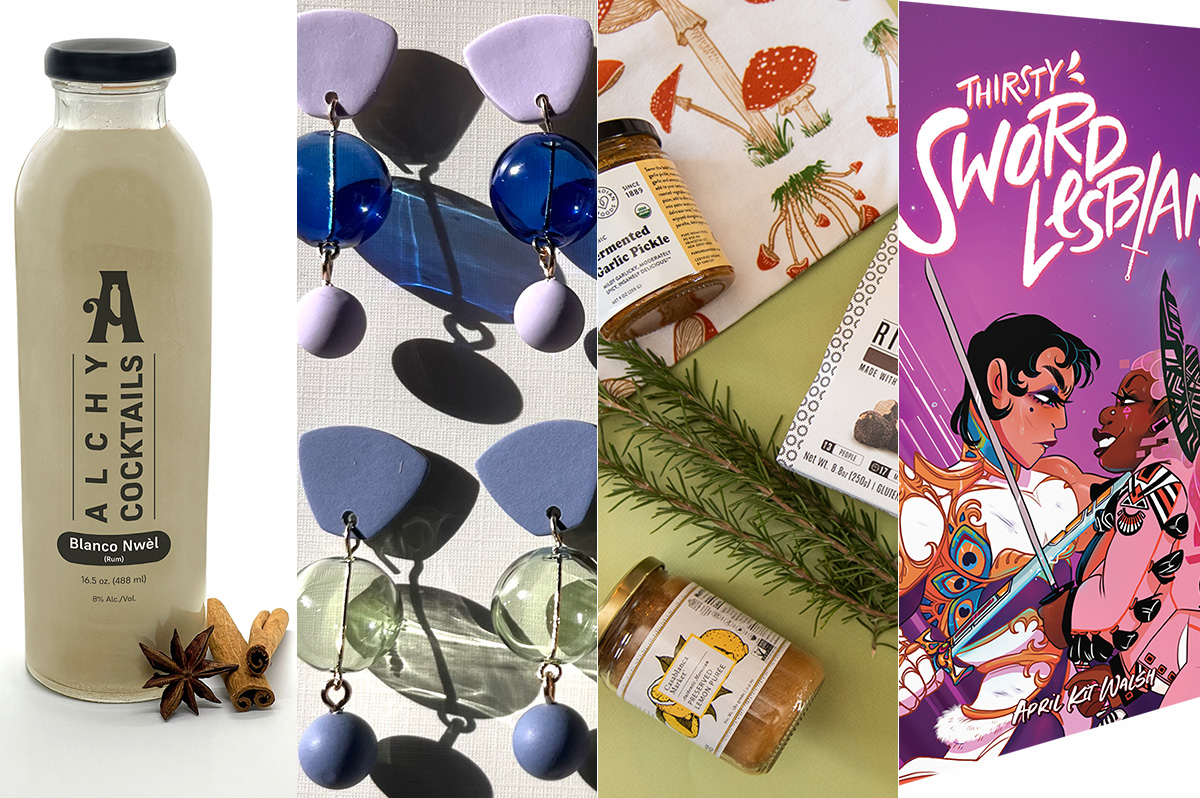
The DowntownDC Holiday Market is bustling. Union Station is decked out with its annual Christmas tree. Washingtonians have wrapped their houses and apartment balconies with festive lights and holiday decorations. The holiday season is here. And with stockings to fill and empty space under the tree, Washington’s local shops and artists have plenty to offer.
Show your LGBTQ and D.C. pride with the Washington Blade’s annual holiday gift guide.
To embrace the holiday buzz: The Blanco Nwèl cocktail from Alchy Cocktails. This Caribbean eggnog is one of Alchy Cocktail’s seasonal holiday cocktails. The flavor profile is similar to coquito, a traditional Puerto Rican Christmas drink with a coconut base. As a queer and Caribbean-owned business, Alchy Cocktails has been based out of Washington since 2021. Blanco Nwèl is available in both cocktail ($24) and mocktail ($12) online and at a variety of holiday markets, including the Tingey Plaza Holiday Market, the Flea Market at Eastern Market, Union Station’s Main Hall Holiday Market, and more. ($24)
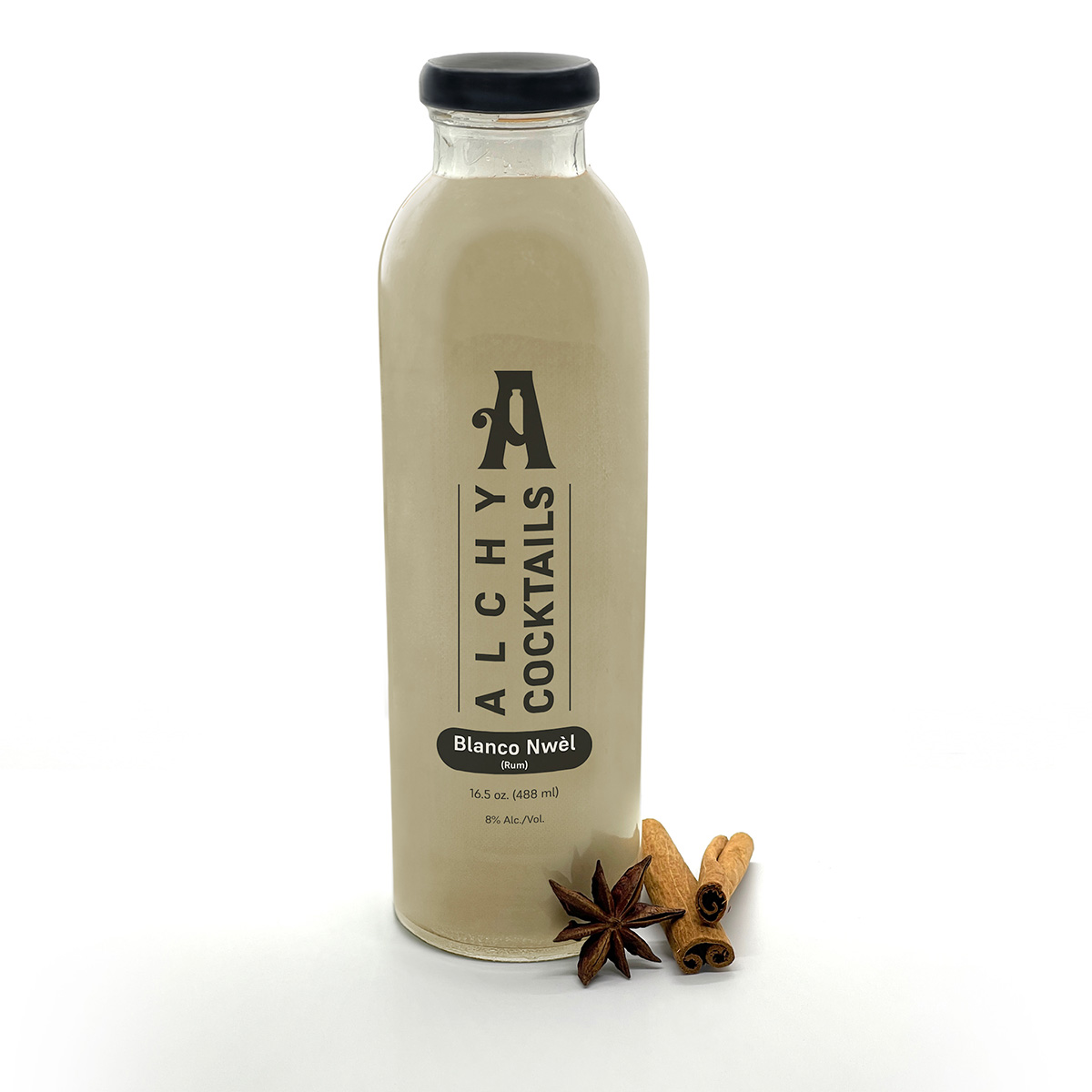
A spicy bite: Gordy’s Cajun Okra from Salt and Sundry. These spicy, tangy pickles pull on Southern Cajun-style flavors, packing a punch with paprika, cayenne, and more. Gordy’s is an LGBTQ-owned and Washington-based brand, making this gift an opportunity to support a local LGBTQ business straight from the jar. This pantry staple is available on Salt & Sundry’s website and at its locations in Union Market, Logan Circle, and its Georgetown holiday pop-up store. ($14)
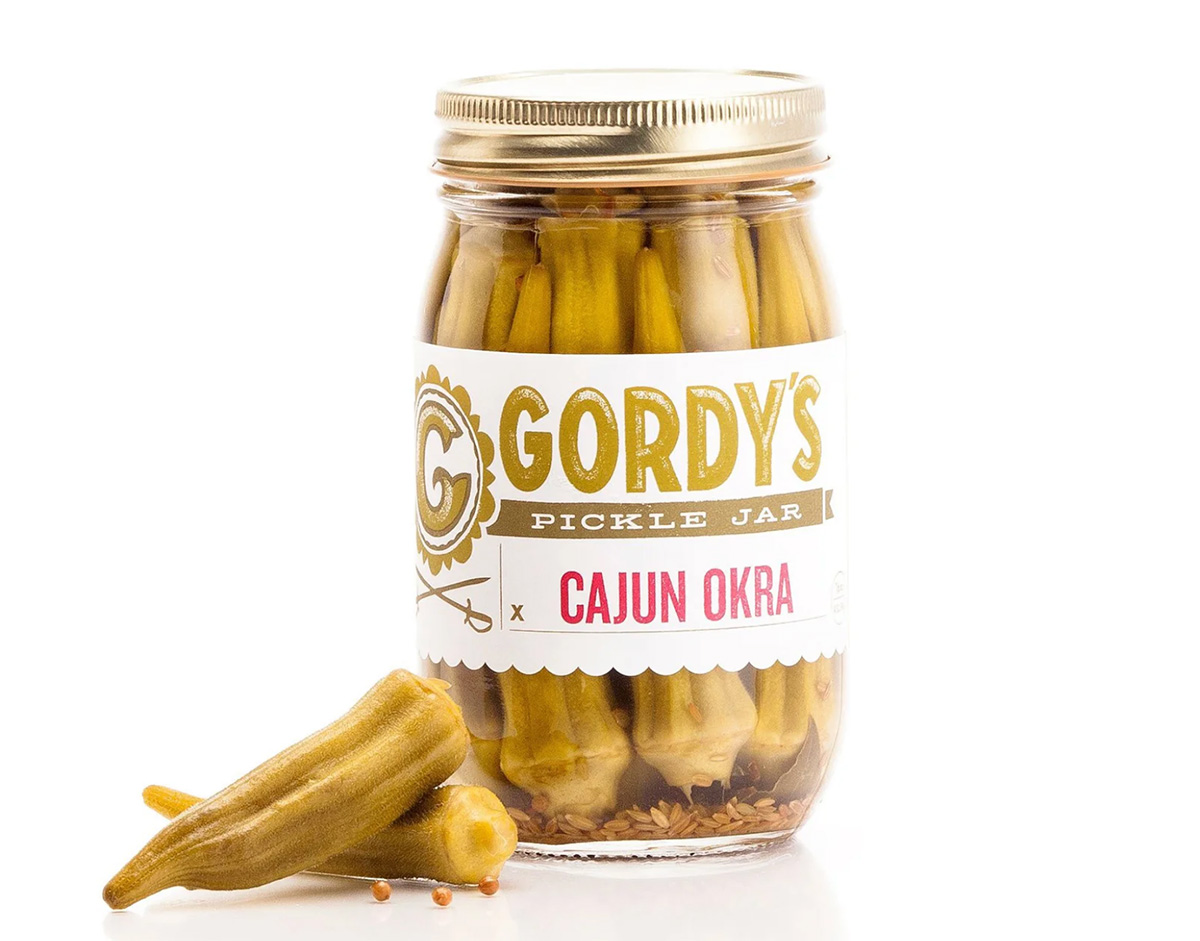
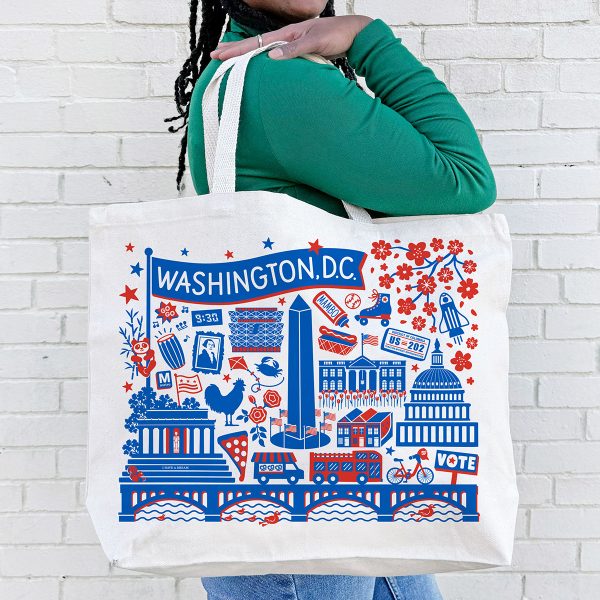
To celebrate Washington pride: The DC Landmark Tote Bag from The Neighborgoods. Native Washingtonians, visitors, friends and family alike will find something to love about this Washington-themed tote bag. Food trucks, the 9:30 Club, the Metro logo and pandas from the National Zoo are just some of the city’s landmarks depicted across the tote in a red, white, and blue color palette. The tote is a part of the DC Landmarks collection, which donates 10 percent of its sales to the American Civil Liberties Union. The Neighborgoods itself is a local, woman-owned business built out of a passion for screen-printing in 2013. The 100 percent cotton canvas tote is for sale online or at the DowntownDC Holiday Market. ($22)
To give friends and family their flowers: The Flowers Bandana from All Very Goods. This 100 percent cotton bandana was designed in Washington and hand printed in India. Its uniqueness comes in being covered with the faces of Black women, representing a “love letter to all women but especially Black women,” according to All Very Goods. The Black woman-owned and operated business, based out of Northwest Washington, has a mission to celebrate diversity and representation through its products. The bandana intends to give Black women their “flowers.” The Flowers bandana is available for purchase online. ($24)
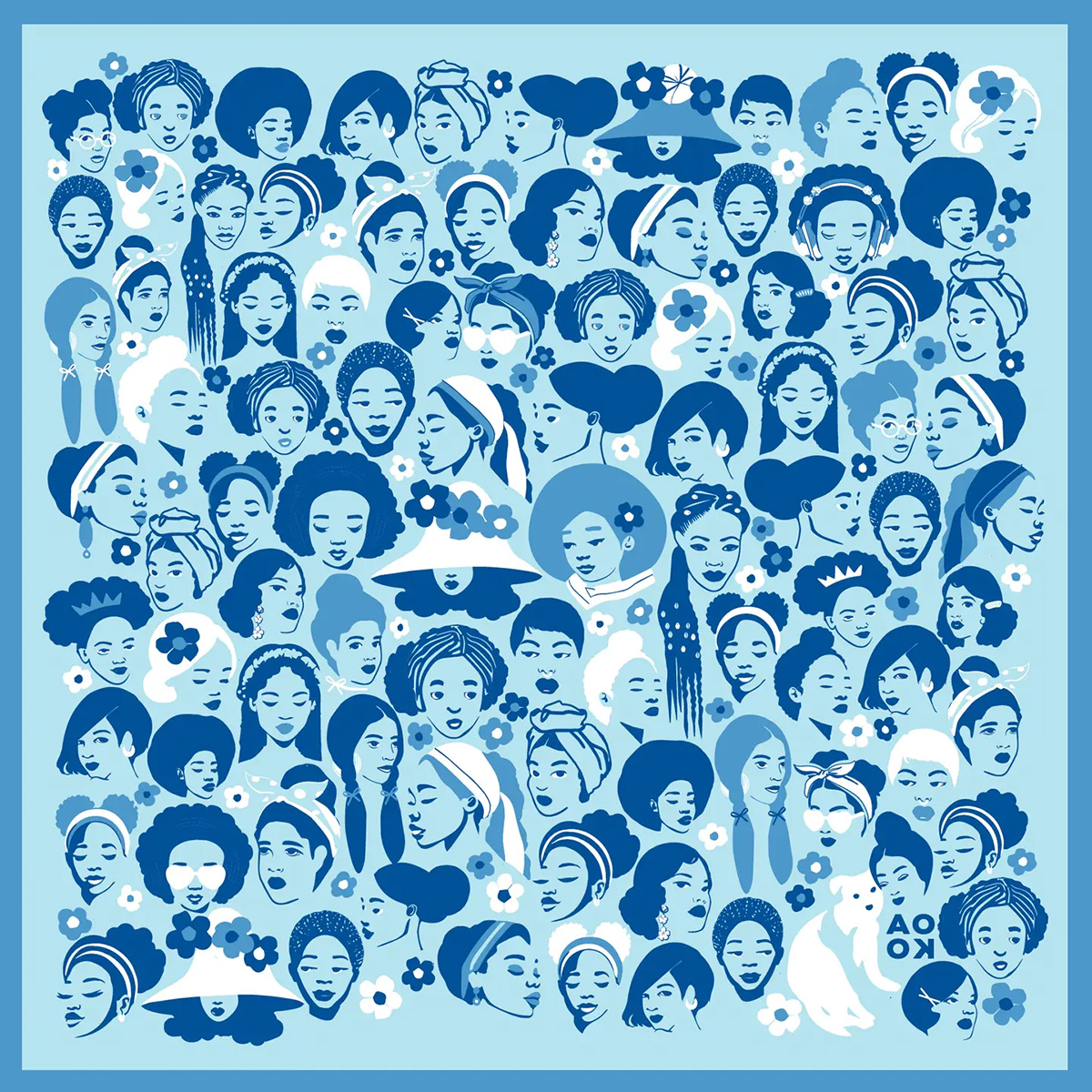
To unlock culinary creativity: The Curious Chef Gift Collection from Each Peach Market. This customizable collection of kitchen oddities — ranging from tinned fish to chili oil — is a quirky gift for the most inventive chefs. The collection is available in a Standard Santa, Extra Goodies and Super Holiday Size for up to $165. The Washington-based market, founded in 2013, permits customers to make the collection special by specifying what unique ingredients are packaged, including products made by local or LGBTQ brands. Each Peach Market offers assembly and pick up in-person at its Mount Pleasant shop and also offers local delivery and nationwide shipping via its website. ($85)
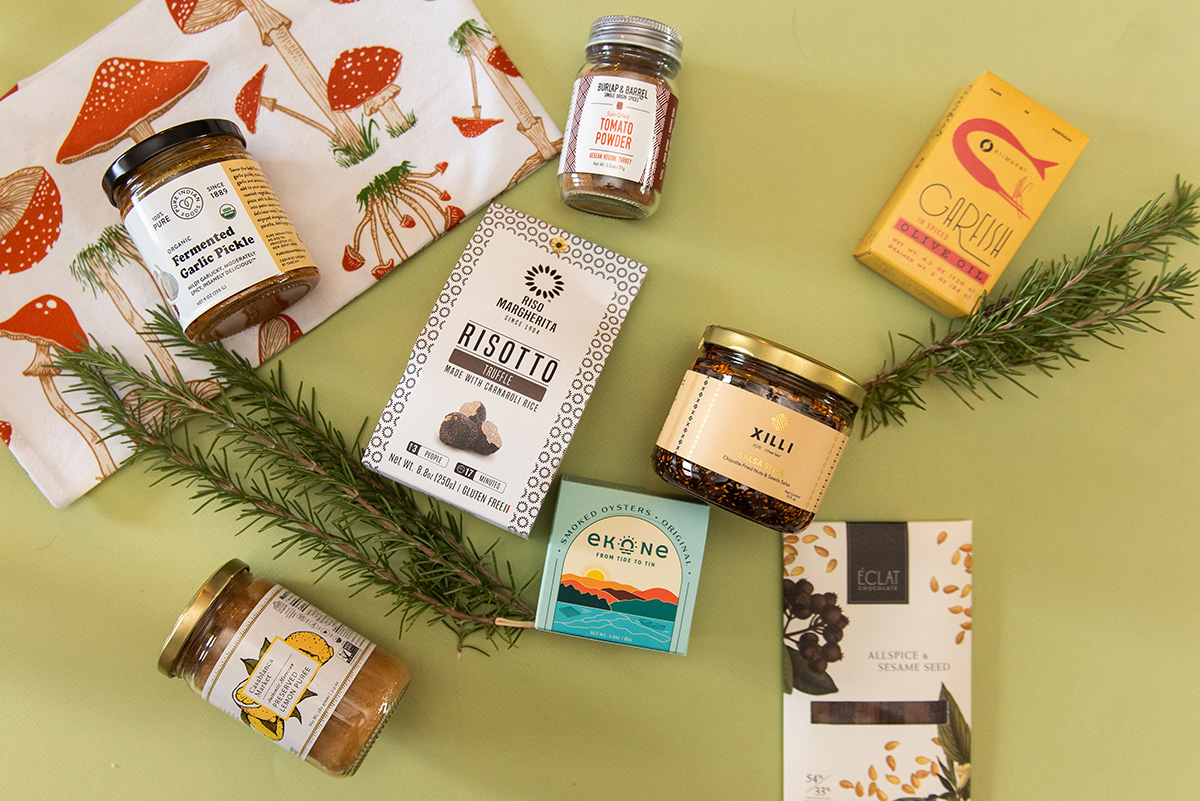
To give a touch of sweetness: The DC Landmark Chocolate Covered Oreo Holiday Cookies from Capital Candy Jar. Wrapped in a festive red bow, this box of nine cookies embraces love for Washington and the holiday season in one. Among the dark and milk chocolate covered cookies are images of the U.S. Capitol, the White House, the Lincoln Memorial, the Jefferson Memorial and festive hollies. The treat, packaged in a Hill East facility just a few blocks from the Capitol, is available for purchase online and at the DowntownDC Holiday Market. ($23.95)
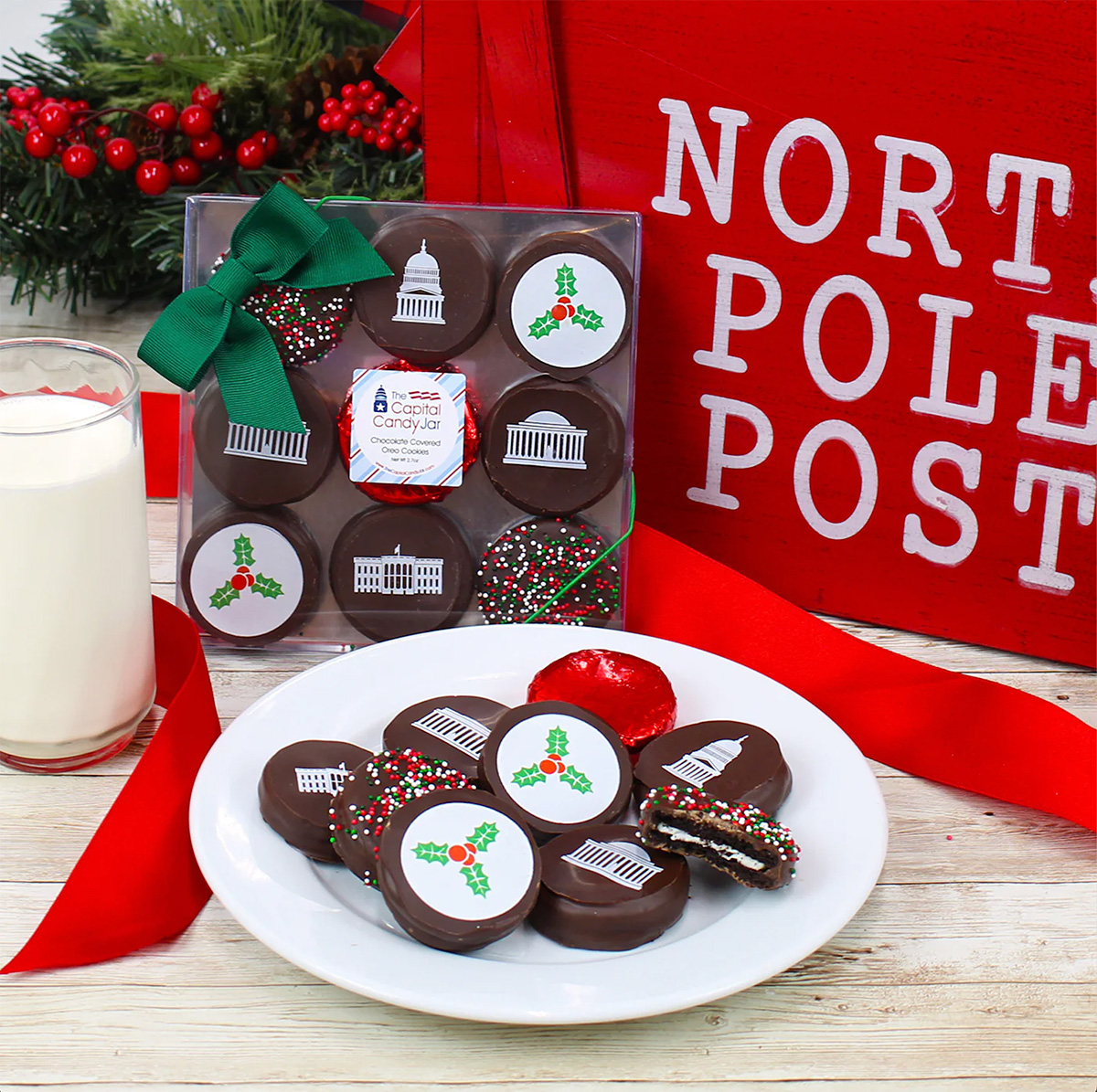
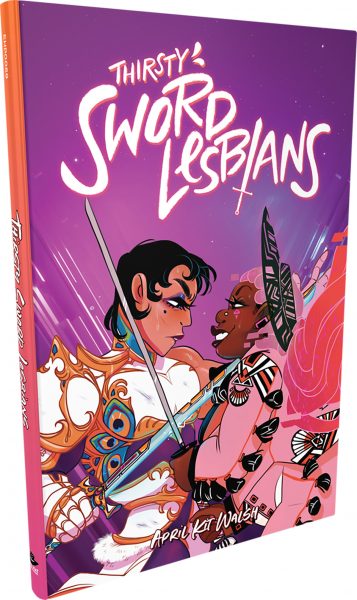
To celebrate queer gaming: Thirsty Sword Lesbians from Labyrinth Games & Puzzles. This roleplaying game embraces lesbian culture by unlocking a world of swords, romance, and battle. Ideal for group settings, the book presents a system of world building and character identities that are best brought to life by creative minds. Labyrinth, which has been a local Washington business for more than 15 years, celebrates non-digital fun through games and puzzles that connect the community. This gift is offered online and at Labyrinth’s Capitol Hill location. ($29.99)
To make a bold statement: The “Resist” T-shirt from Propper Topper. This locally screen-printed black tee features the Washington flag designed within a raised fist, symbolizing both Washington pride, and political resistance. The shirt is made exclusively by Propper Topper, a local Washington business that evolved from a hat shop to a gift store since opening in 1990. The tri-blend unisex shirt is available both for pickup at Propper Topper’s Cathedral Heights location and shipping via the online site. ($32)
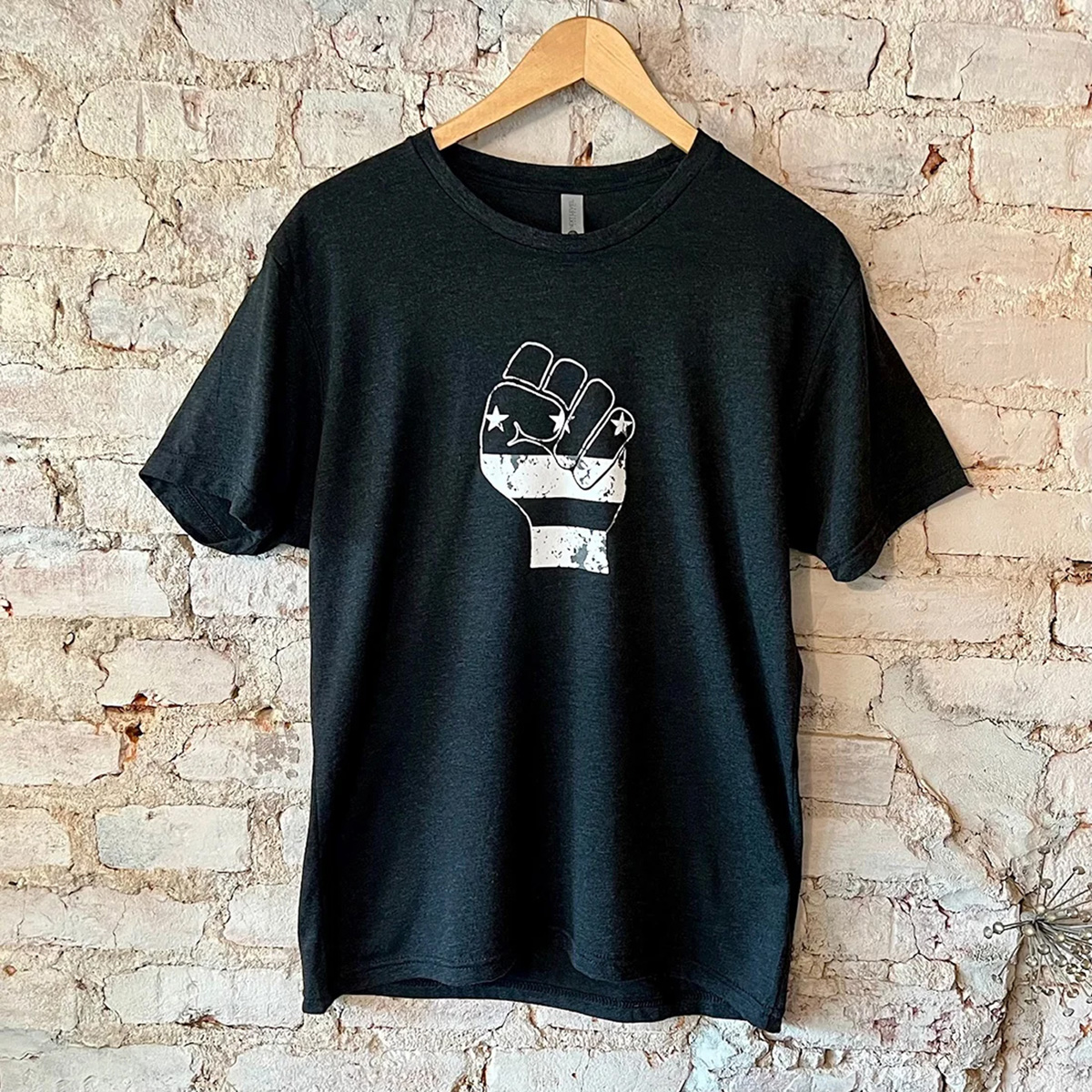
To keep it c(g)lassy: The Glass Ball earrings from Blue Moon Aquarius. Gifting can rarely go wrong when it comes to a new pair of earrings. The unique statement earrings — made of polymer clay, glass, and 18k gold plating over surgical steel — are hand cut, sanded and assembled in Washington, meaning each set is unique. Blue Moon Aquarius, a local brand, is known for its small batch jewelry and home decor designed with clay materials. Available in oxblood, hunter green, lavender, and bluestone color palettes, these earrings are available for purchase on Blue Moon Aquarius’ website and at the DowntownDC Holiday Market. ($48)
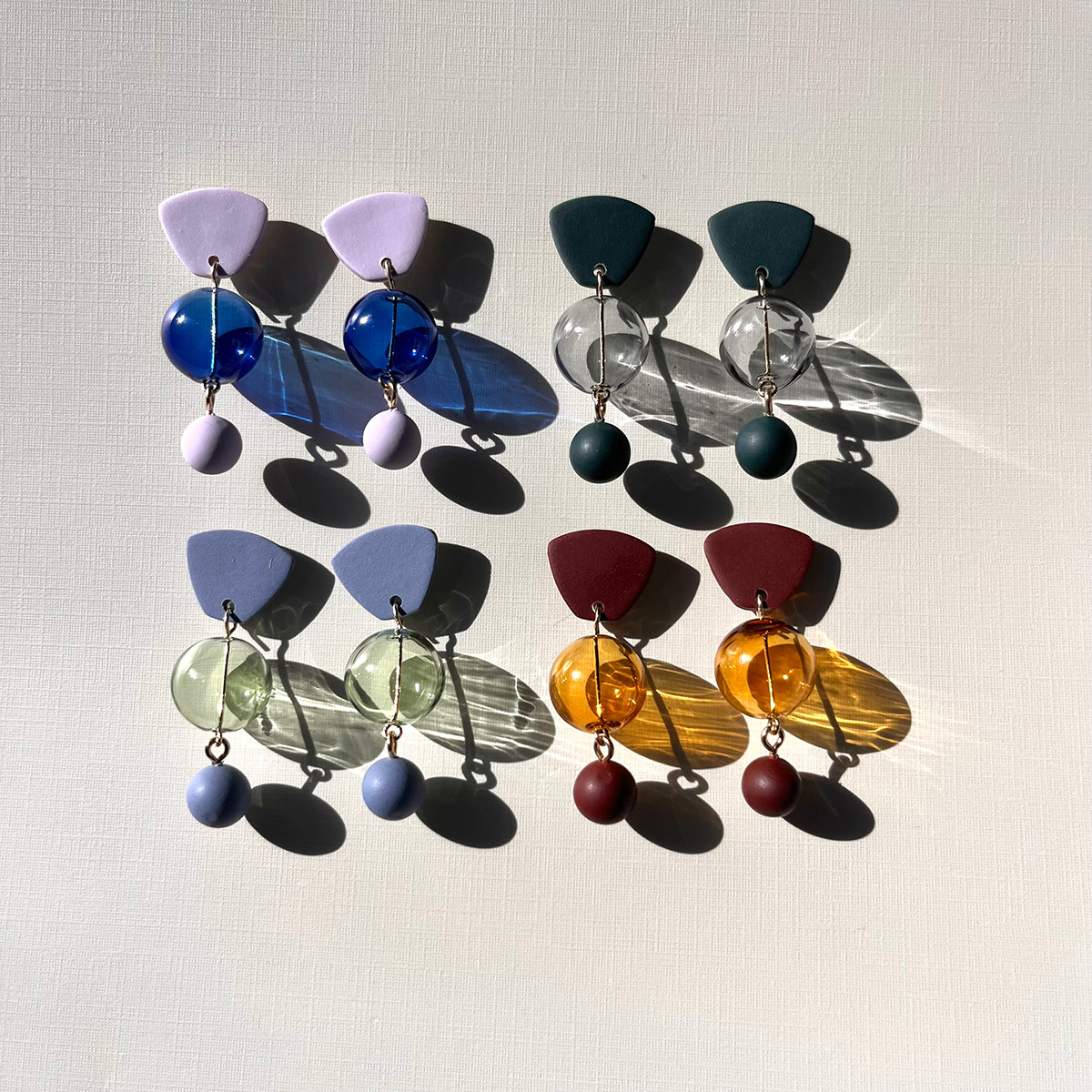
To elevate a holiday tea or charcuterie party: The Honey Flight: Tea Lover’s Selection from BannerBee. This local honey company presents the ideal gift to make cozying up with a cup of tea slightly more special. The Honey Flight contains three types of raw wildflower honey infused with fair trade Ugandan vanilla bean, chai spices, and locally sourced lemon thyme herb. The gift is also an opportunity to uplift a family company based in the Mid-Atlantic that offers all-natural, sustainable products. The flight is available online, at the DowntownDC Holiday Market or at the Arlington Courthouse and Dupont Farmers’ Markets. ($36)
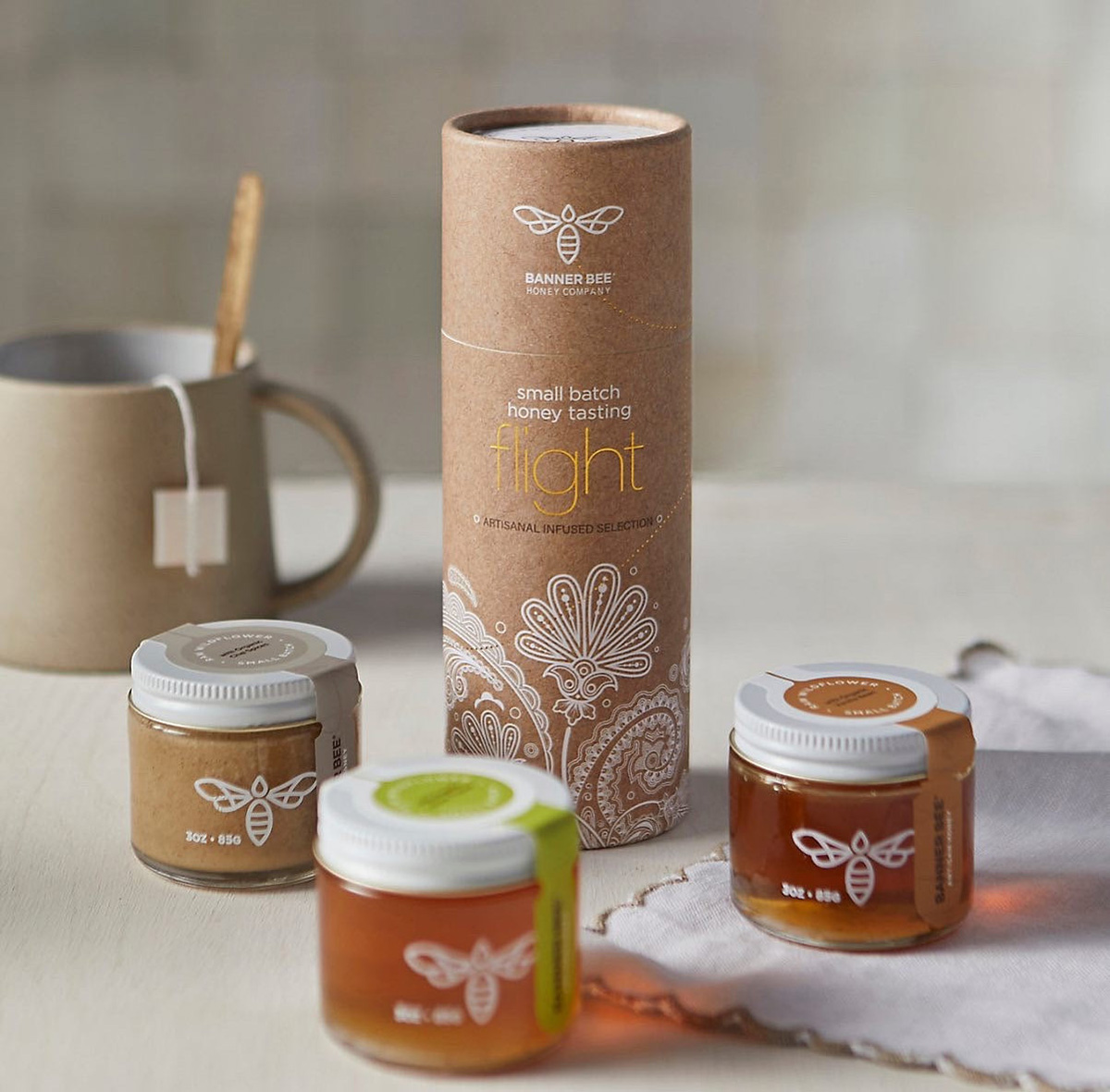
For Baltimore shoppers: If you’re in Charm City, don’t miss Balston Mercantile, opened by a gay couple in June. Their gorgeous shop in the Hampden neighborhood offers an array of unique, upscale finds, from barware and artwork to cookbooks and home decor and more. (849 W. 36th St.)
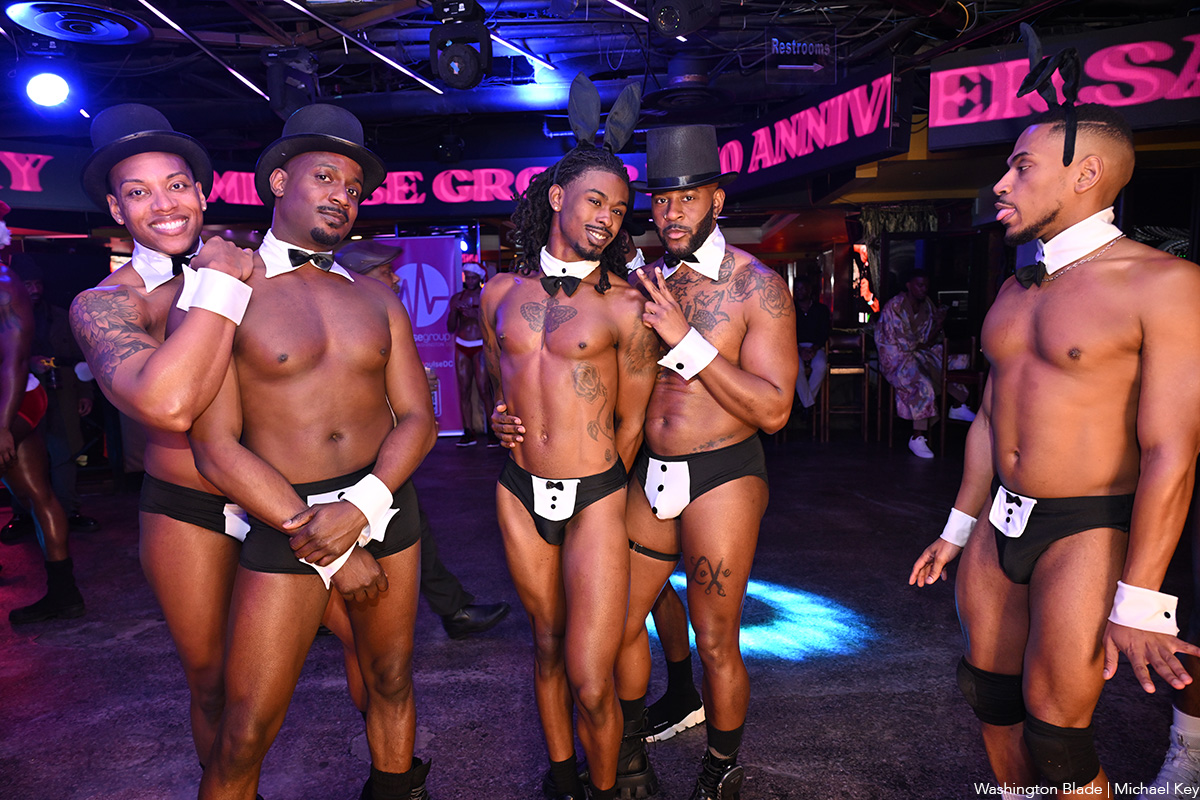
Impulse Group DC held “10’s Across the Board: A Celebration of 10 Years” at Bravo Bravo (1001 Connecticut Ave., N.W.) on Sunday, Dec. 14. Impulse Group DC is a volunteer-led 501(c)(3) and affinity group of AIDS Healthcare Foundation dedicated “to engaging, supporting, and connecting gay men” through culturally relevant health and advocacy work.
(Washington Blade photos by Michael Key)
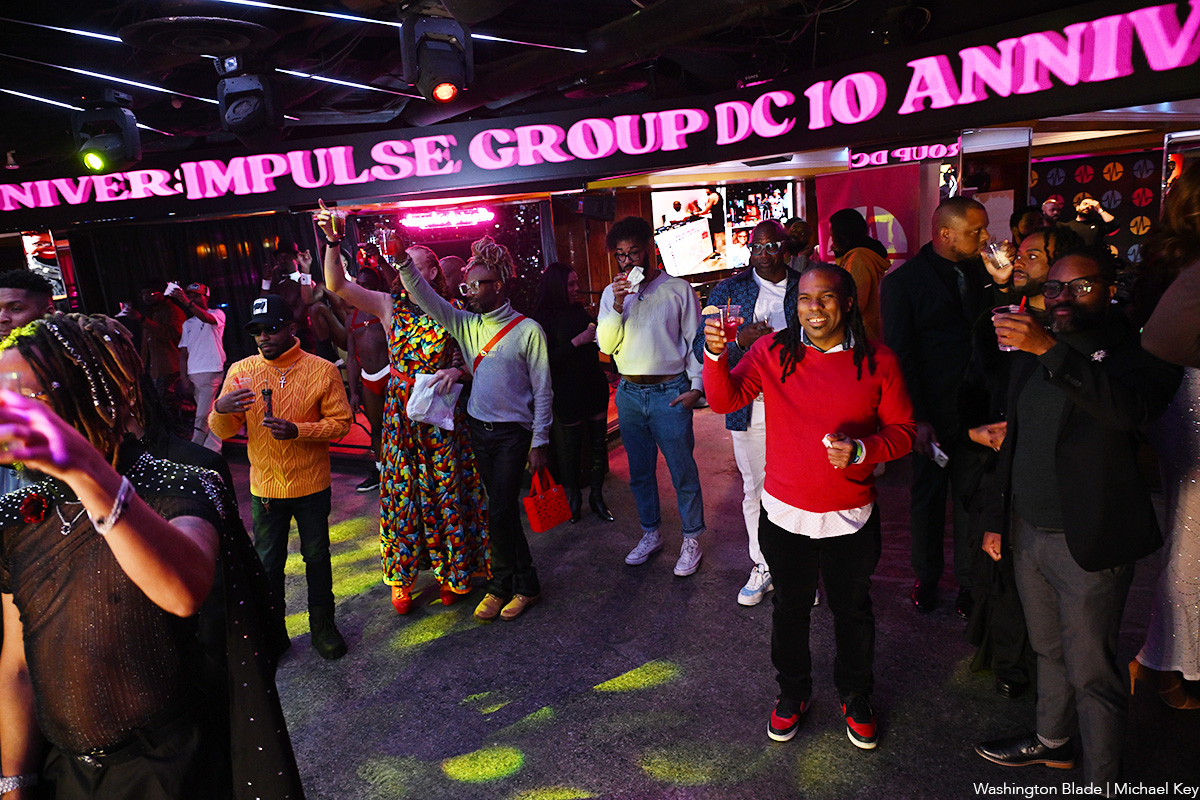
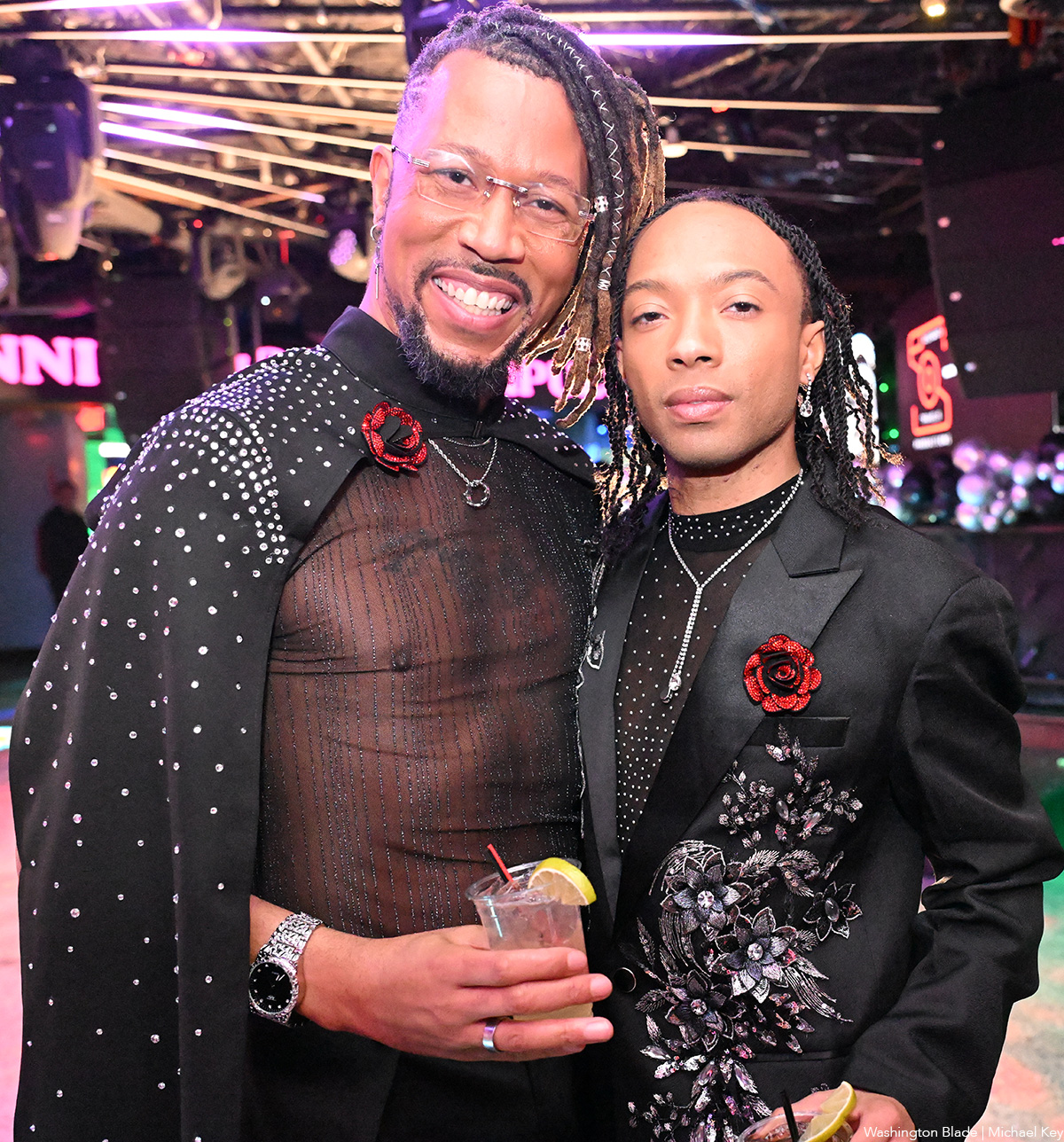
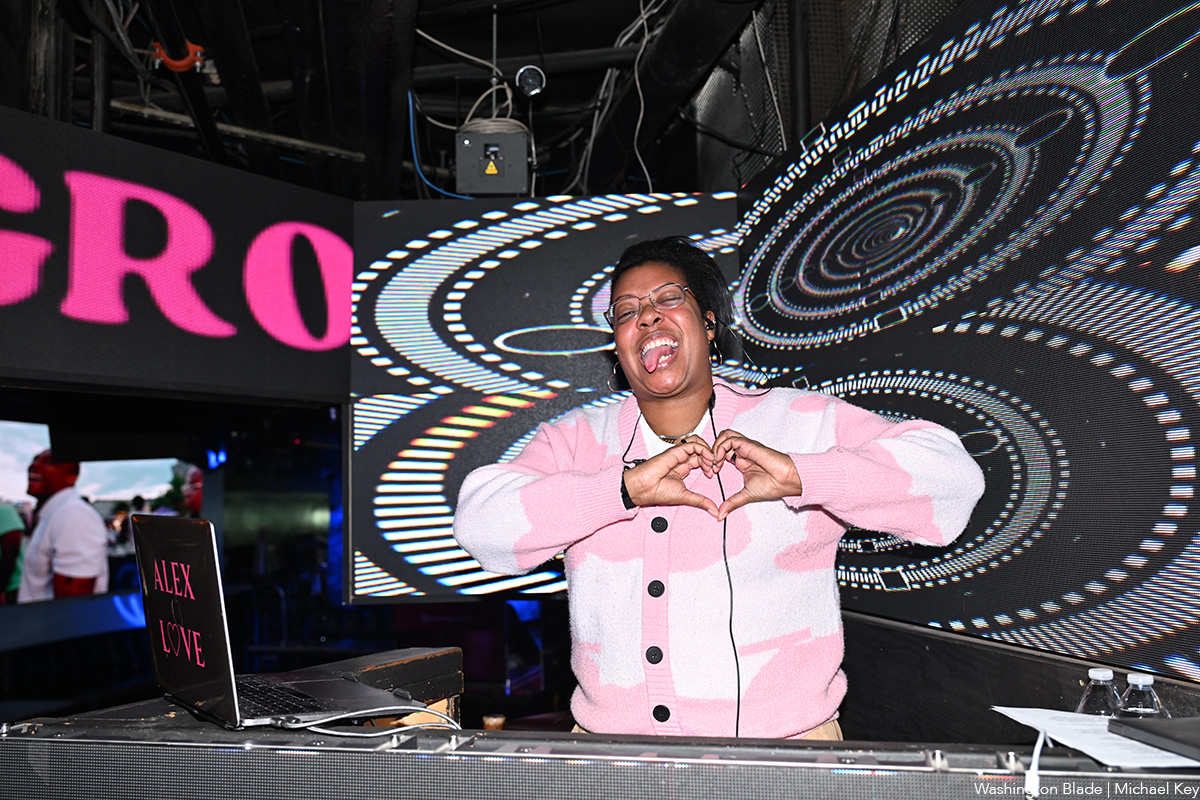
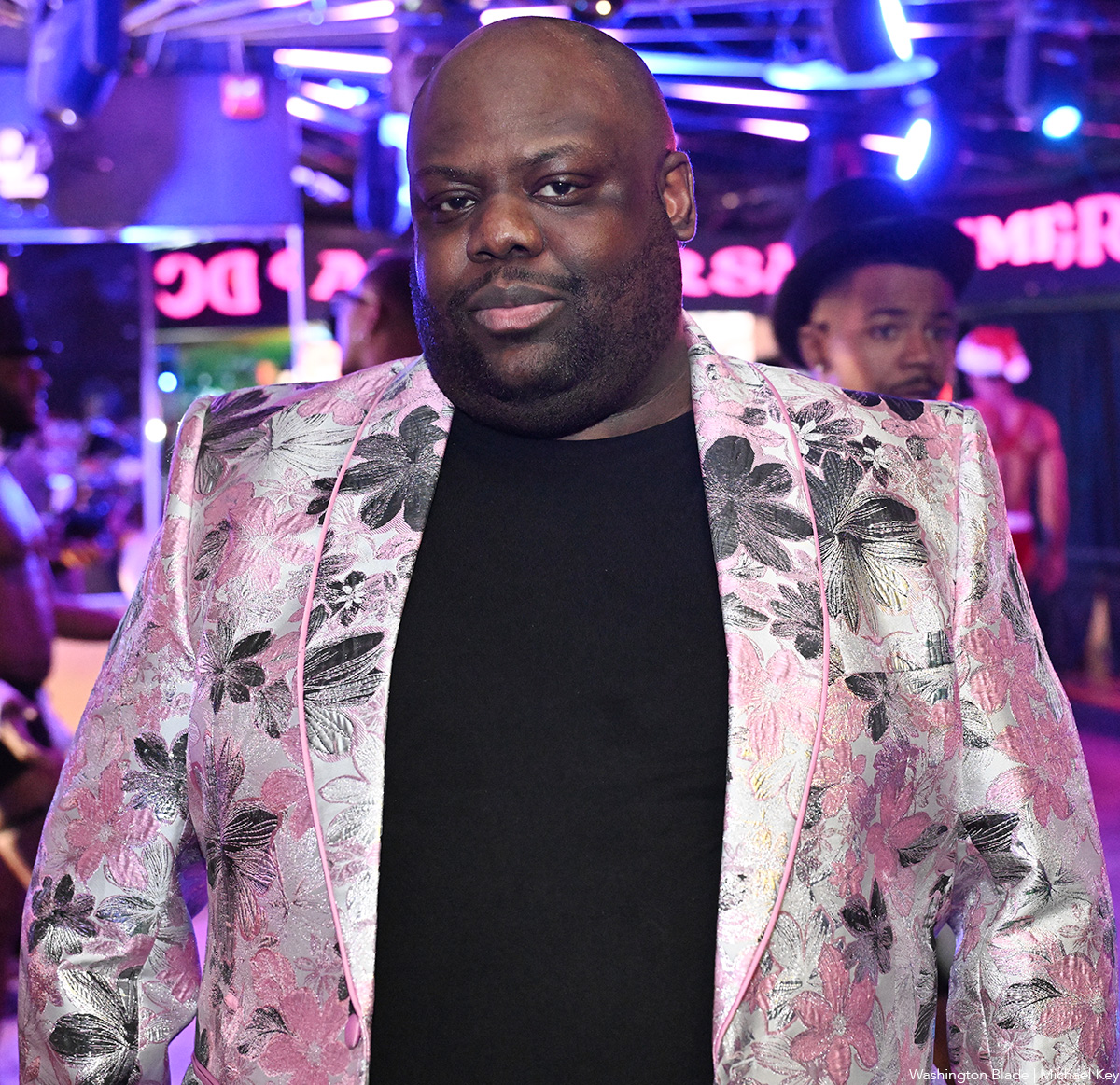
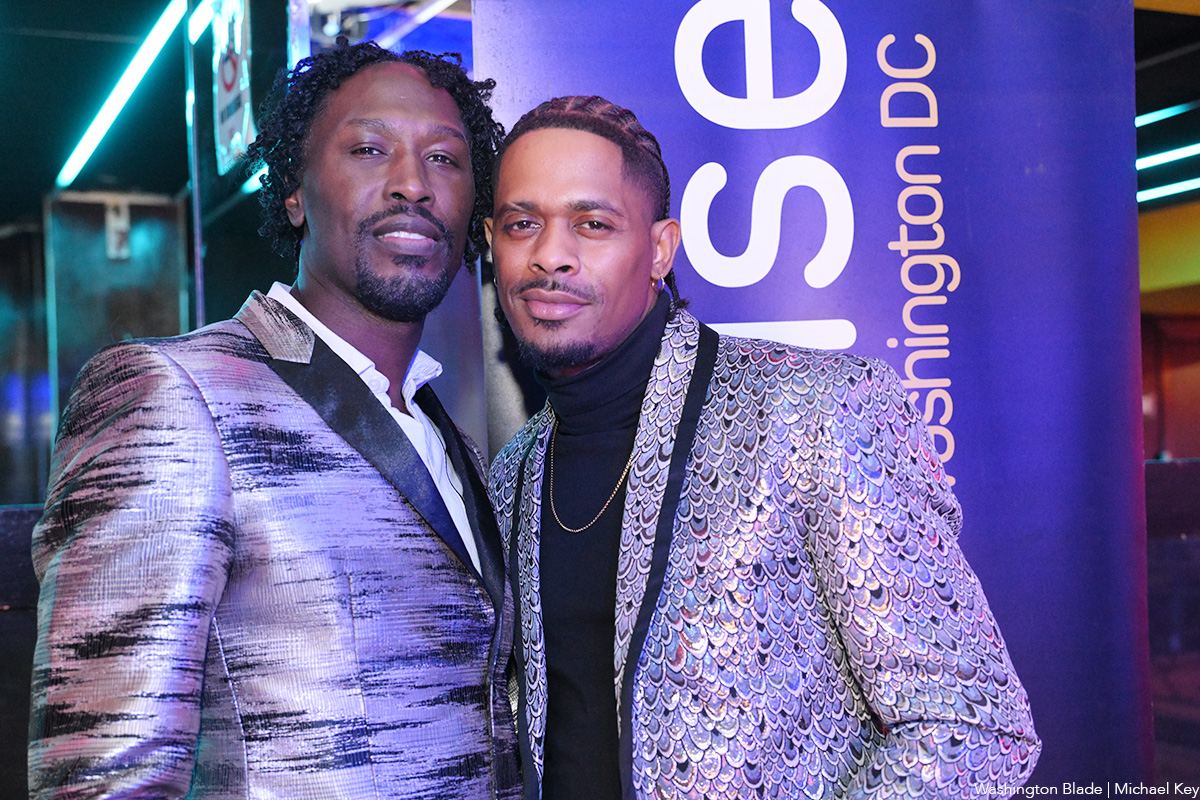
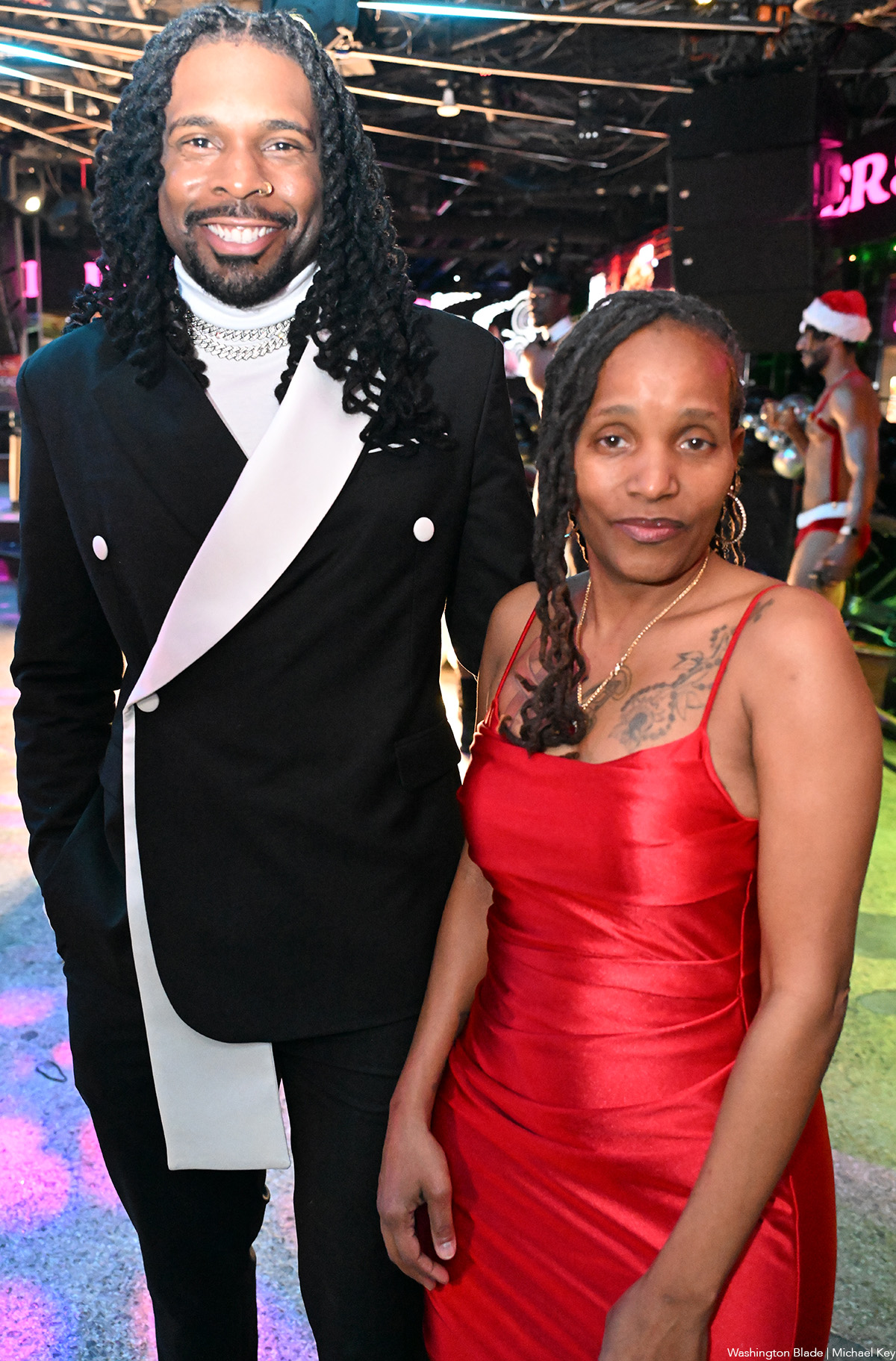
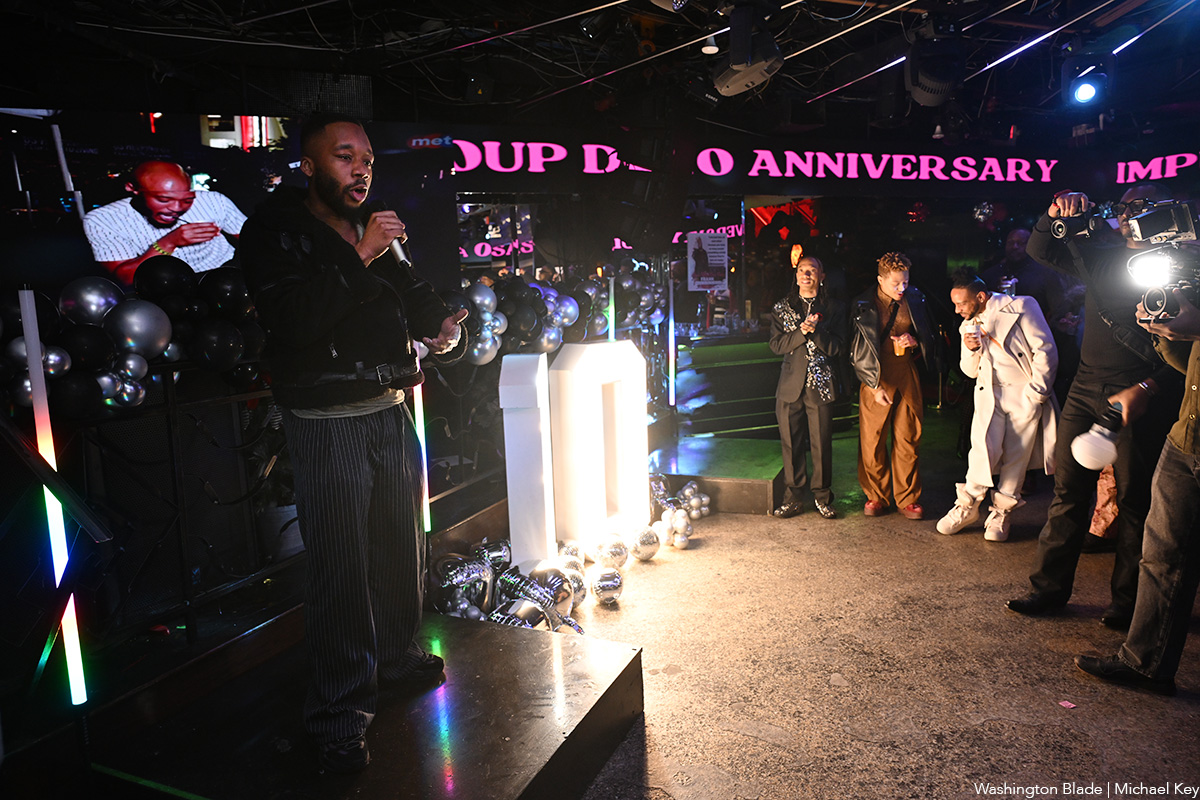
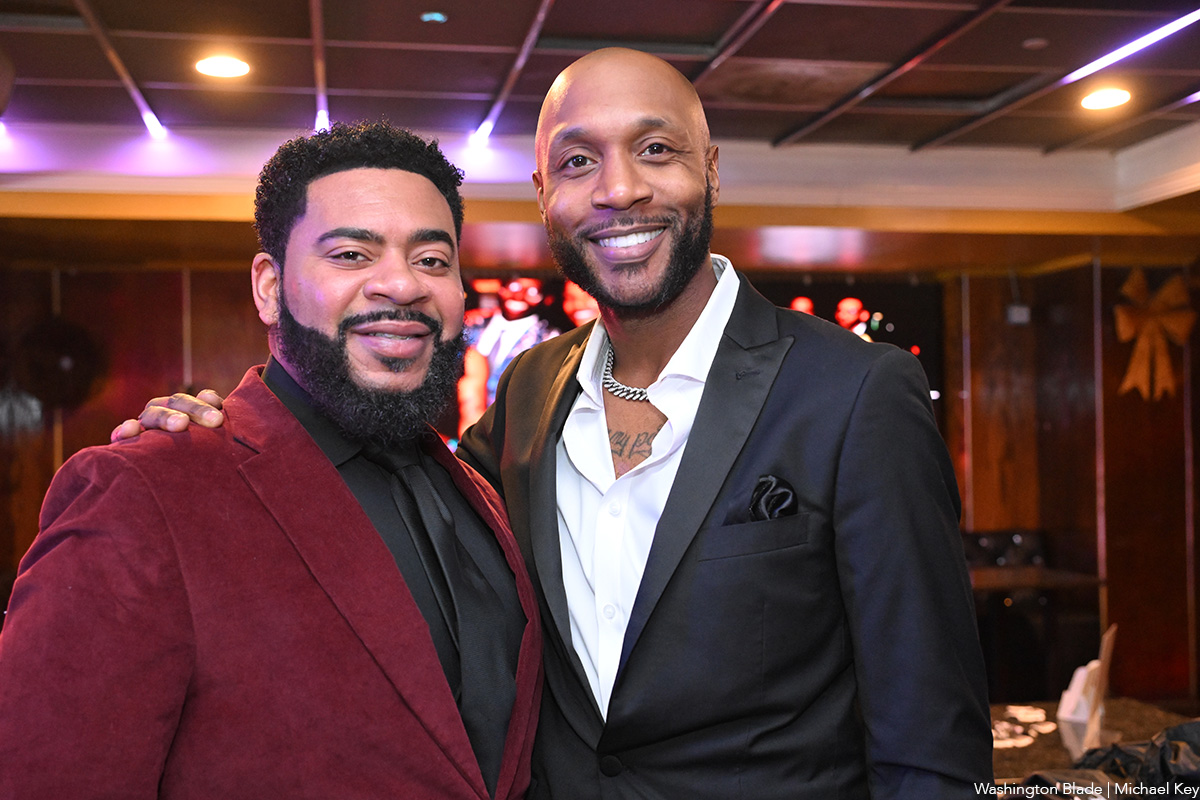
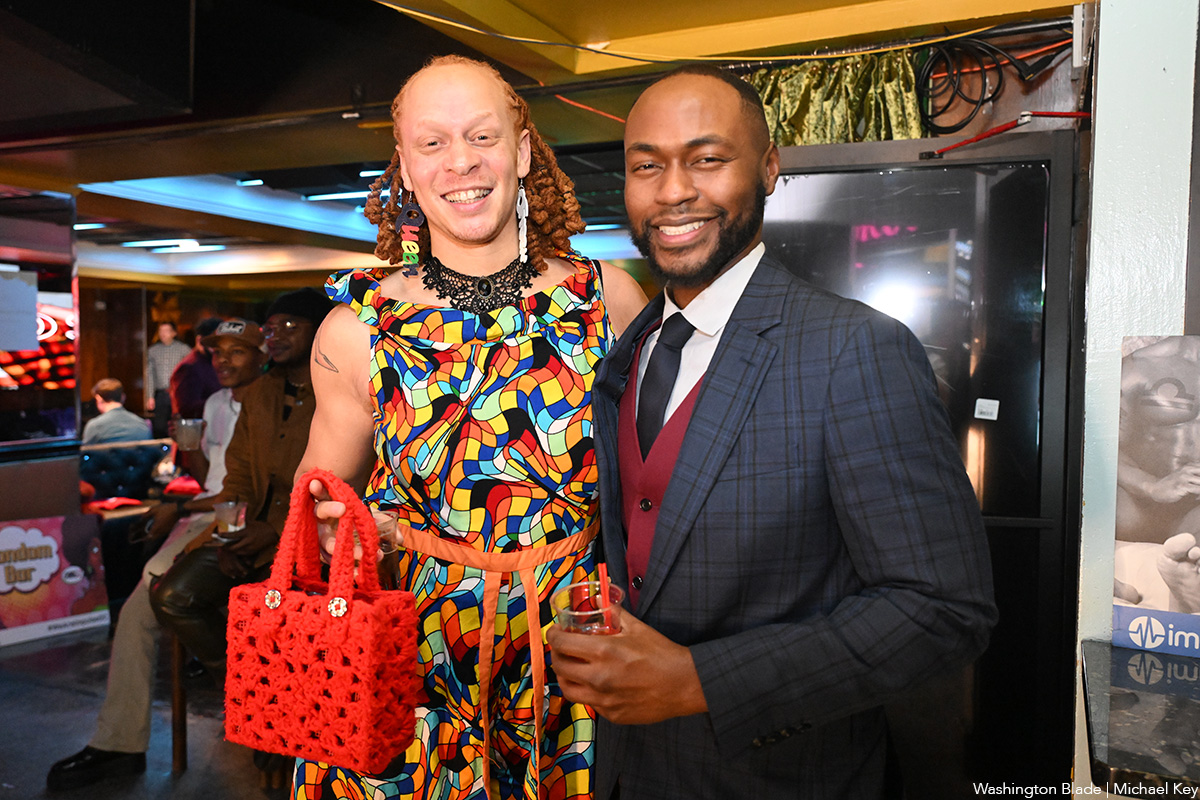
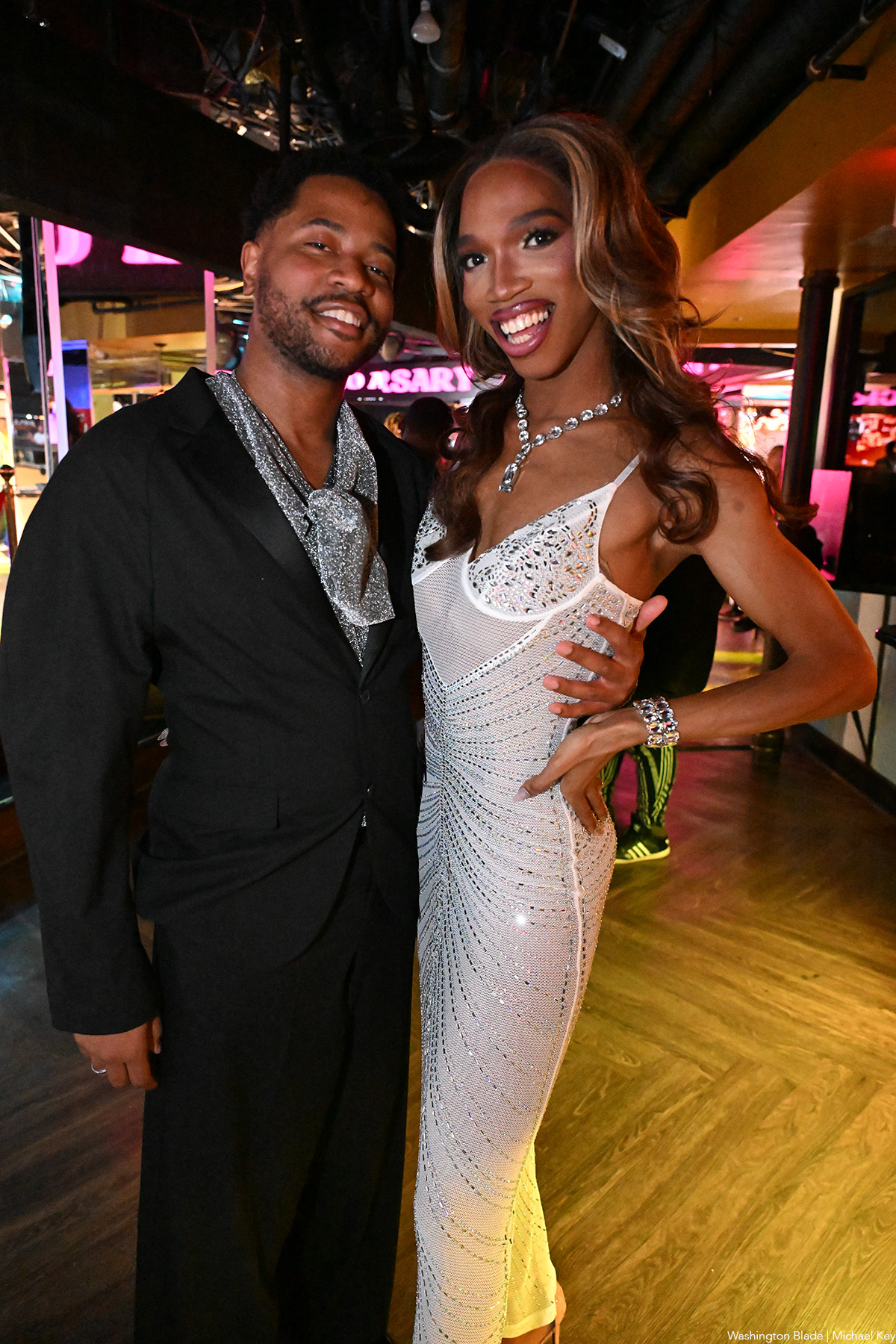
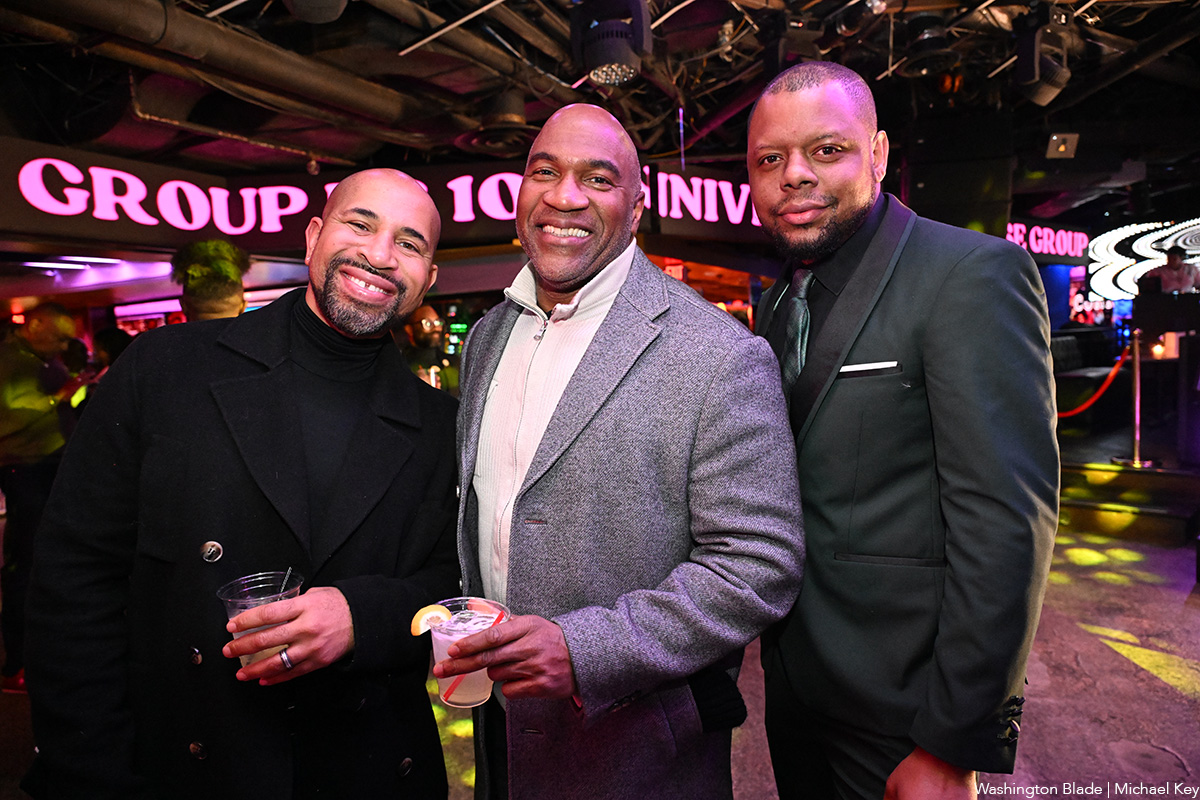
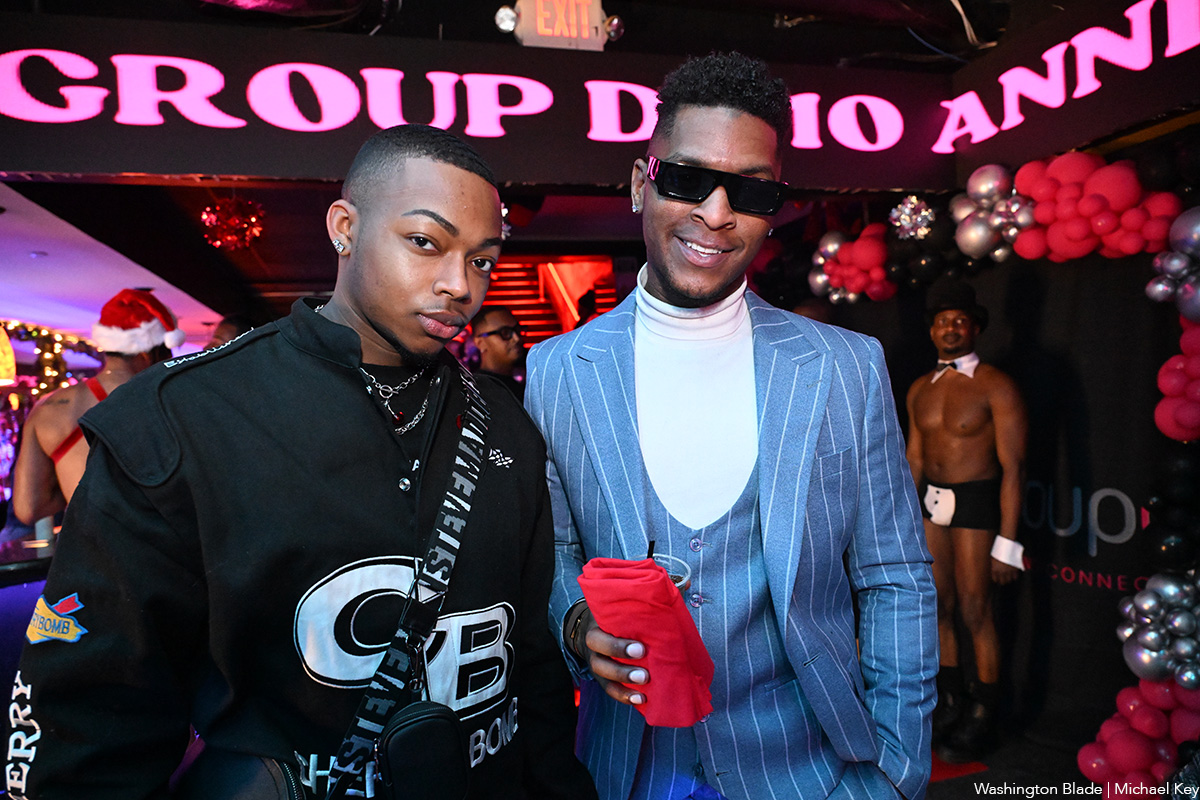
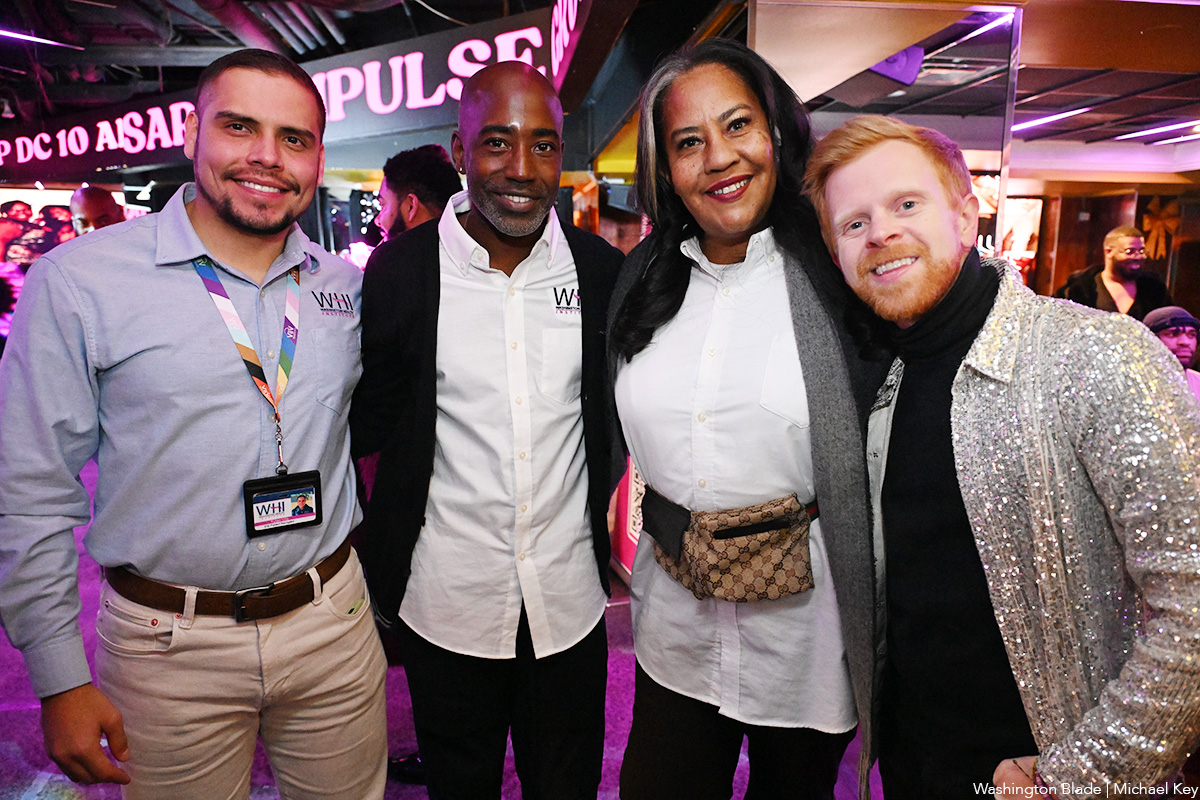

Rob Reiner, most known for directing untouchable classics like “The Princess Bride,” “Misery,” “When Harry Met Sally…,” and “Stand by Me,” died Dec. 14 alongside his wife, Michele Singer Reiner, in their Los Angeles residence. While investigations are actively underway, sources have told PEOPLE Magazine that the pair’s son, Nick Reiner, killed his parents and has been taken into custody.
Reiner was a master of every genre, from the romantic comedy to the psychological thriller to the coming-of-age buddy movie. But in addition to his renowned work that made him a household name, Reiner is also remembered as a true advocate for the LGBTQ community. In 2009, Reiner and his wife co-founded the American Foundation for Equal Rights, helping fight against California’s Prop 8 same-sex marriage ban. They were honored at the 2015 Human Rights Campaign Las Vegas Gala.
In a statement, HRC President Kelley Robinson said: “The entire HRC family is devastated by the loss of Rob and Michele Reiner. Rob is nothing short of a legend — his television shows and films are a part of our American history and will continue to bring joy to millions of people across the world. Yet for all his accomplishments in Hollywood, Rob and Michele will most be remembered for their gigantic hearts, and their fierce support for the causes they believed in — including LGBTQ+ equality. So many in our movement remember how Rob and Michele organized their peers, brought strategists and lawyers together, and helped power landmark Supreme Court decisions that made marriage equality the law of the land — and they remained committed to the cause until their final days. The world is a darker place this morning without Rob and Michele — may they rest in power.”
Reiner’s frequent collaborators have also spoken out as the industry is in mourning, including figures like Ron Howard and John Cusack.
A joint statement from Jamie Lee Curtis and Christopher Guest (who starred in Reiner’s “This is Spinal Tap”) reads: “Christopher and I are numb and sad and shocked about the violent, tragic deaths of our dear friends Rob and Michele Singer Reiner and our ONLY focus and care right now is for their children and immediate families and we will offer all support possible to help them. There will be plenty of time later to discuss the creative lives we shared and the great political and social impact they both had on the entertainment industry, early childhood development, the fight for gay marriage, and their global care for a world in crisis. We have lost great friends. Please give us time to grieve.”
While attending the 2019 HRC Los Angeles Dinner, Reiner spoke out about the need for equality: “We have to move past singling out transgender, LGBTQ, black, white, Jewish, Muslim, Latino. We have to get way past that and start accepting the idea that we’re all human beings. We’re all human beings, we all share the same planet, and we should all have the same rights, period. It’s no more complicated than that.”
-

 Politics2 days ago
Politics2 days agoLGBTQ Democrats say they’re ready to fight to win in 2026
-

 District of Columbia2 days ago
District of Columbia2 days agoBrian Footer suspends campaign for Ward 1 D.C. Council seat
-

 Chile5 days ago
Chile5 days agoFar-right José Antonio Kast elected Chile’s next president
-

 Opinions3 days ago
Opinions3 days agoLighting candles in a time of exhaustion

